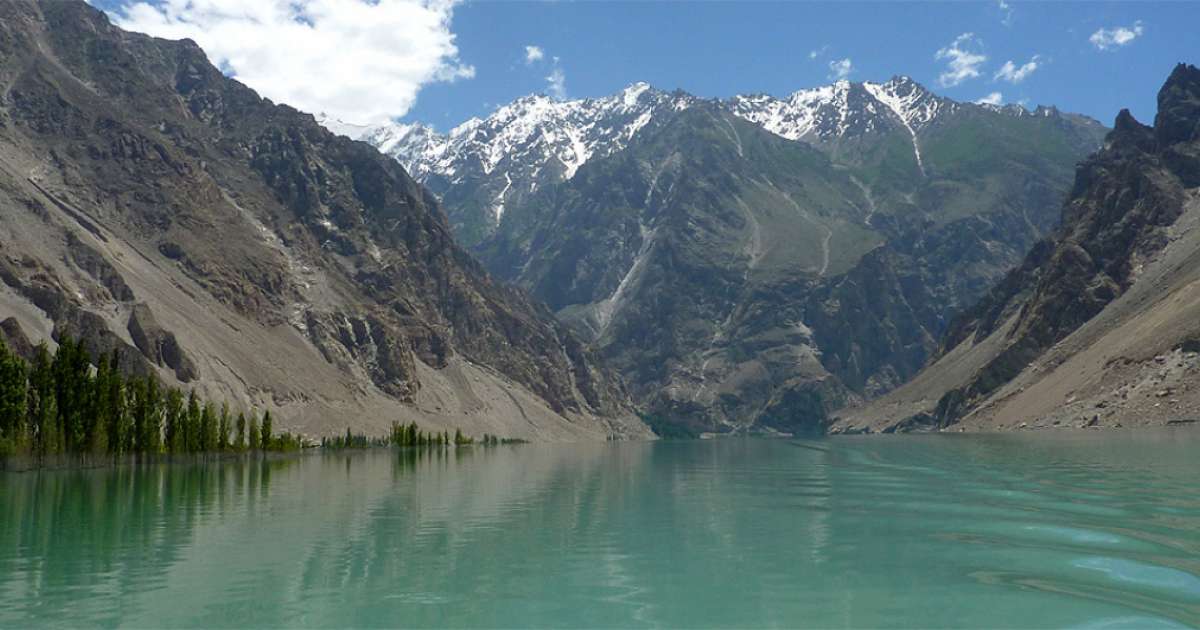Hunza River

Nestled within the majestic landscapes of Gilgit–Baltistan, Pakistan, the Hunza River flows with quiet grace, carving a path that mirrors the rich tapestry of cultures that have flourished along its banks for centuries. As the principal river within the Hunza region, it serves not only as a vital lifeline for the communities that call its shores home but also as a symbol of cultural unity and heritage. In this comprehensive exploration, we delve into the multifaceted significance of the Hunza, uncovering the layers of history, tradition, and identity that have shaped its cultural importance.
The Geographic Heartbeat of Gilgit–Baltistan:
Before delving into the cultural significance of the Hunza River, it is essential to understand its geographic and hydrological importance within Gilgit–Baltistan. Originating from the confluence of the Chapursan and Khunjerab nalas, both of which are fed by glaciers in the Karakoram Range, From there, it winds its way through the valleys and gorges of the Hunza region, eventually joining the Gilgit River and the Naltar River before flowing into the mighty Indus River. the Hunza meanders through valleys and gorges, nourishing the fertile lands and sustaining the diverse ecosystems that thrive in its midst.
The river’s journey through the Hunza region is punctuated by scenic vistas, snow-capped peaks, and lush greenery, creating a breathtaking backdrop for the cultural heritage that flourishes along its banks. From ancient settlements to modern-day communities, the Hunza has been a witness to the ebb and flow of human history, serving as a silent witness to the triumphs and tribulations of the people who have called this region home.
Cultural Pillars Along the Hunza River:
Indigenous Traditions: The Hunza River Basin is home to several indigenous communities, including the Burusho people, who have inhabited the region for millennia. The Burusho, also known as the Hunza people, have developed a rich cultural heritage characterized by their language, traditions, and social organization. Their customs, rituals, and folklore are deeply intertwined with the rhythms of the river, reflecting a harmonious relationship between humans and nature.
Historical Significance: Throughout history, the Hunza River has been a crossroads of civilizations, serving as a vital artery for trade, commerce, and cultural exchange. The ancient Silk Road, which passed through the region, brought merchants, pilgrims, and travelers from distant lands to the bustling markets and towns along the riverbanks. This vibrant exchange of goods, ideas, and cultures enriched the social fabric of Gilgit–Baltistan, leaving behind a legacy of diversity and tolerance.
Religious Reverence: The Hunza River holds spiritual significance for the people of the region, who view it as a sacred symbol of nature’s bounty and divine providence. Throughout history, the river has been revered in local folklore, poetry, and rituals, embodying the timeless cycle of life, death, and rebirth. Temples, shrines, and sacred sites dedicated to various religious traditions dot the landscape, serving as pilgrimage destinations for devout believers and spiritual seekers alike.
Cultural Festivals and Celebrations: The cultural importance of the Hunza River is further exemplified through the vibrant festivals and celebrations that take place along its banks throughout the year. From traditional music and dance performances to religious ceremonies and agricultural rituals, these events serve as a testament to the resilience and creativity of the communities that inhabit the region. They provide an opportunity for locals and visitors alike to come together, celebrate shared heritage, and forge lasting bonds of friendship and solidarity.
Preservation and Conservation Efforts:
As the cultural importance of the Hunza River continues to be recognized and celebrated, efforts to preserve and conserve its natural and cultural heritage have become increasingly vital. Initiatives aimed at sustainable development, environmental conservation, and cultural preservation are underway, with local communities, government agencies, and non-profit organizations working together to safeguard the river and its surrounding ecosystems for future generations.
Conclusion:
In conclusion, the Hunza River stands as a testament to the enduring bond between nature and culture, weaving together the threads of history, tradition, and identity that define the cultural landscape of Gilgit–Baltistan. As we reflect on its significance, let us honor and cherish the Hunza as more than just a body of water but as a living embodiment of the rich cultural heritage that has flourished along its banks for centuries. Through our collective efforts, we can ensure that the cultural legacy of the Hunza continues to inspire and enrich the lives of generations to come.
Know More about the Hunza River.
What are The Religious Places of the Hunza River?
When Did The Hunza River Basin Become a Focus?
Where is The Hunza River Located?
Who Were The Key Historical Figures and Civilizations of The Hunza River?
How to Reach Hunza River?




